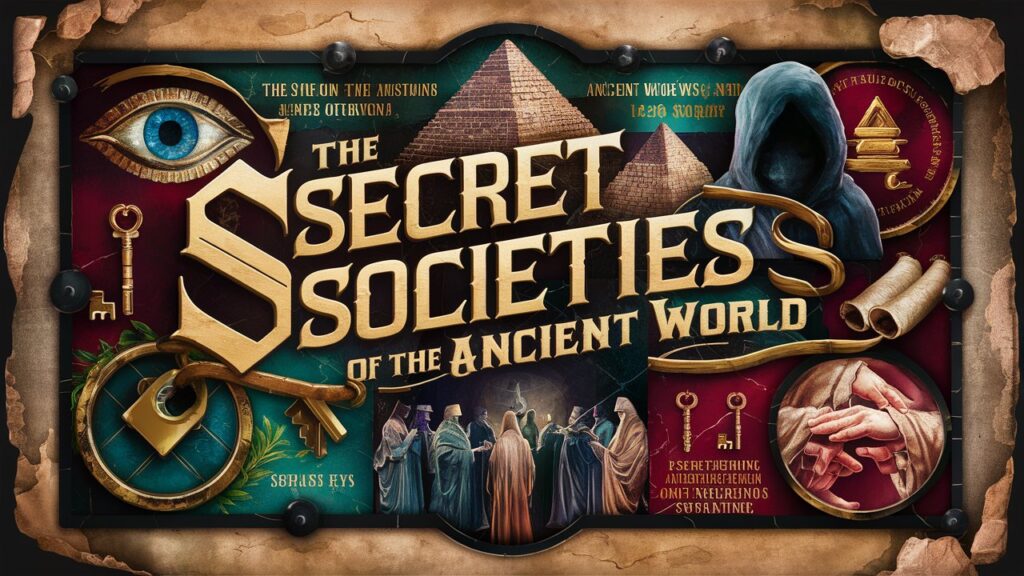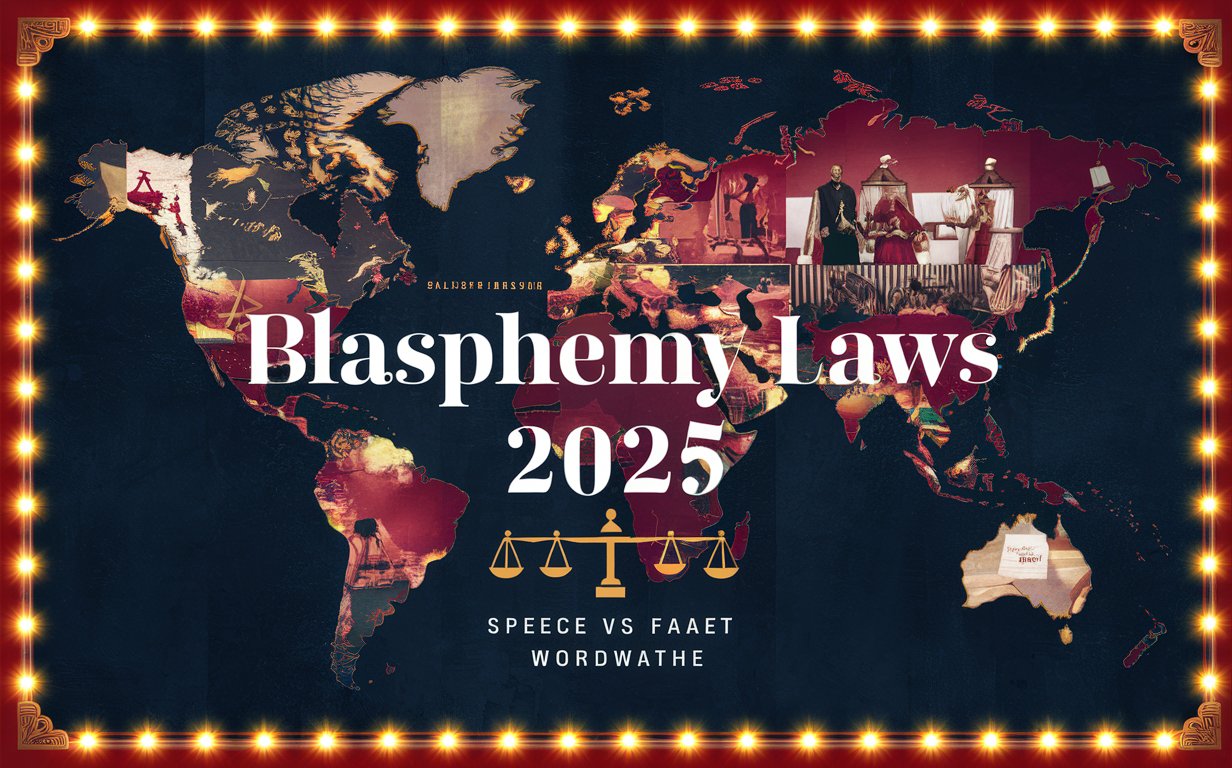The Secret Societies of the Ancient World

Throughout history, secret societies have captivated the imagination of people, often shrouded in mystery and intrigue. From their clandestine rituals to their powerful influence on politics and religion, these societies have played an outsized role in shaping the world. While many secret organizations are associated with the modern era, the roots of such societies can be traced back to the ancient world. These early groups often operated in secrecy to preserve esoteric knowledge, protect their members, and exert influence over political and social systems.
This article delves into some of the most well-known secret societies from ancient civilizations, exploring their purposes, beliefs, and the myths and mysteries that still surround them today.
1. The Egyptian Mystery Schools
In ancient Egypt, secret knowledge was highly prized, particularly in relation to religion, the afterlife, and the cosmos. The Egyptian mystery schools were not a single organization but rather a collection of secretive groups that shared a common interest in the occult, esoteric teachings, and spiritual enlightenment. These schools were often tied to the temples, and their teachings were passed down only to those deemed worthy, often after undergoing a period of initiation and instruction.
Key Features:
- Sacred Knowledge: The mysteries of the gods, the afterlife, and the nature of the universe were central themes in Egyptian mystery schools. Initiates were taught about the gods and goddesses, the journey of the soul, and the rituals necessary for spiritual progression.
- Rituals and Initiation: Like many other ancient mystery schools, those in Egypt had elaborate initiation ceremonies, which often included tests of endurance and the revealing of sacred knowledge.
- The Pyramid Texts: The Pyramid Texts, which date back to the Old Kingdom, are considered one of the oldest examples of esoteric knowledge and were believed to be reserved for the pharaohs and priests. These texts contained rituals and prayers designed to guide the king's soul through the afterlife.
While the mystery schools of Egypt eventually faded, they heavily influenced later secret societies, especially in Greece and Rome, where the pursuit of secret knowledge and spiritual enlightenment continued.
2. The Cult of Isis
The Cult of Isis was one of the most widespread and influential secret societies in the ancient world, originating in Egypt but later spreading throughout the Roman Empire. Isis, the Egyptian goddess of magic, motherhood, and fertility, was worshiped as a protector of the dead and a goddess who had the power to heal and protect her followers. Her cult became a secret society in which initiates underwent mysterious rituals and were entrusted with sacred knowledge related to the divine.
Key Features:
- Initiation and Secrecy: The cult's rituals were secret and could only be shared with those who had been properly initiated. These rituals involved prayers, chants, and symbolic acts to invoke the power of Isis.
- Death and Rebirth: The central theme of the Cult of Isis was the idea of life, death, and rebirth. Initiates were believed to be spiritually reborn through their initiation and would receive protection in the afterlife.
- The Mysteries of Isis: The Mysteries of Isis were a series of rites that celebrated the myth of Isis's search for her husband Osiris, who was killed by his brother Seth. These rituals symbolized the triumph of life over death and were central to the belief system of the cult.
The cult's influence spread across the Mediterranean, especially in Greece and Rome, where it competed with other religious movements. It was particularly popular among women, and some emperors even became followers of the goddess Isis.
3. The Eleusinian Mysteries (Greece)
One of the most famous and enduring secret societies in ancient history were the Eleusinian Mysteries of ancient Greece. Held in the city of Eleusis near Athens, these rites were dedicated to the worship of Demeter, the goddess of agriculture, and her daughter Persephone. The mysteries were among the most important religious rituals in ancient Greece and attracted people from all walks of life, including philosophers, poets, and even political leaders.
Key Features:
- Initiation Rites: The Eleusinian Mysteries involved two major stages: the Lesser Mysteries and the Greater Mysteries. Only those who had been initiated into the Lesser Mysteries were allowed to partake in the Greater Mysteries, which included a series of sacred rituals, processions, and possibly even theatrical performances.
- Themes of Life and Death: The central themes of the Eleusinian Mysteries were the cycle of life, death, and rebirth. The myth of Demeter’s search for Persephone, who was abducted by Hades and taken to the underworld, was symbolic of the agricultural cycle and the human experience of life and death.
- Secrecy and Forbidden Knowledge: The rituals were held in secret, and initiates were sworn to silence. While some aspects of the mysteries have been uncovered through ancient writings, much of what took place during the initiations remains a mystery, as initiates were prohibited from revealing the details of the rites.
The Eleusinian Mysteries lasted for over a thousand years, from around 1450 BCE until the 4th century CE, when they were officially abolished by the Christian Roman Empire. The Mysteries had a profound impact on the religious and philosophical traditions of Greece, influencing figures like Plato and Socrates.
4. The Pythagorean Brotherhood
The Pythagorean Brotherhood, founded by the philosopher Pythagoras around the 6th century BCE, was a secret society dedicated to the pursuit of knowledge, mathematics, music, and spirituality. This society combined elements of mysticism with rigorous intellectual study, and its members adhered to strict rules of conduct, including the prohibition of eating beans, which Pythagoras considered sacred.
Key Features:
- Philosophical and Mathematical Teachings: The Pythagoreans are best known for their contributions to mathematics, particularly the Pythagorean Theorem. However, their teachings were also spiritual and mystical, with an emphasis on the immortality of the soul and the belief that numbers were the fundamental principles of the universe.
- Initiation and Oaths: To join the Pythagorean Brotherhood, one had to undergo a period of initiation, which included taking oaths of silence and obedience. The Brotherhood was divided into two groups: the "listeners," who were beginners, and the "mathematici," who were the more advanced members.
- Secrecy and Influence: The Brotherhood operated in secrecy, with its teachings and rituals often hidden from the general public. Pythagoras himself was revered as a divine figure, and the society’s influence spread throughout the ancient Greek world.
Though the Pythagorean Brotherhood eventually dissolved, its impact on mathematics, philosophy, and Western thought was immense. Many of its members, including Plato, were inspired by Pythagorean ideas.
5. The Mithraic Mysteries (Rome)
The Mithraic Mysteries were an ancient religious cult that originated in Persia and later spread throughout the Roman Empire. This secret society worshipped Mithras, the god of light, truth, and justice, who was depicted as slaying a bull in a symbolic act of cosmic significance. The Mithraic cult became particularly popular among Roman soldiers, and its mysteries were characterized by initiation rites, communal meals, and a focus on personal salvation and rebirth.
Key Features:
- Initiation and Rites: Mithraic initiates underwent several stages of initiation, with each stage associated with different symbolic acts and tests. The rituals involved secret ceremonies, often held in underground temples or caves known as mithraea.
- Symbolism of the Bull: Central to the Mithraic Mysteries was the myth of Mithras slaying the bull, which represented the struggle between life and death, as well as the cosmic struggle between light and darkness. The blood of the bull was said to nourish the earth and bring life.
- Exclusivity and Secrecy: Like other secret societies, the Mithraic Mysteries were exclusive and highly secretive. Only men were allowed to join, and the details of the rituals were kept hidden from outsiders.
The Mithraic Mysteries thrived from the 1st to the 4th century CE, but eventually declined as Christianity became the dominant religion of the Roman Empire.
Conclusion: The Legacy of Ancient Secret Societies
The secret societies of the ancient world were more than just groups of people who held mysterious rituals or beliefs. They were powerful forces in their respective societies, influencing politics, religion, and culture in ways that are still not fully understood. These societies preserved esoteric knowledge, provided spiritual guidance, and created networks of influence that spanned across generations.
While many of these societies have long since disappeared, their legacy endures in the mysteries they left behind. Modern secret societies, such as the Freemasons and various New Age movements, continue to draw on the traditions of these ancient groups, keeping alive the allure of hidden knowledge and the search for greater truths about the world and the cosmos. The secret societies of the ancient world remind us that human beings have always sought meaning beyond the visible, and that some mysteries are meant to remain just out of reach.



Post Comment